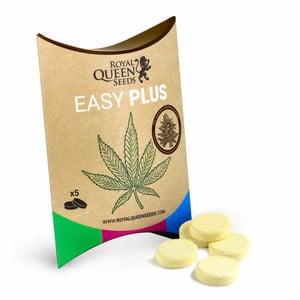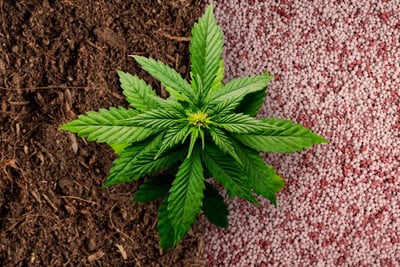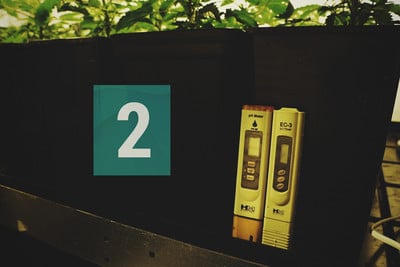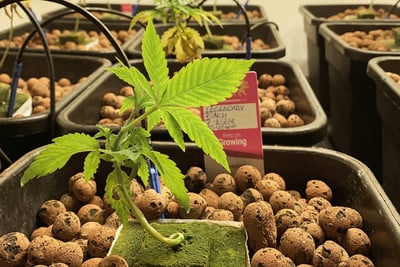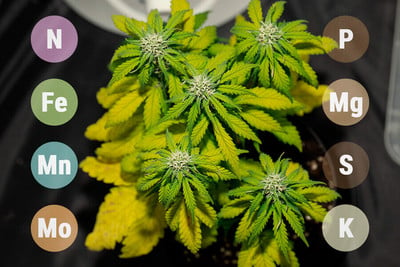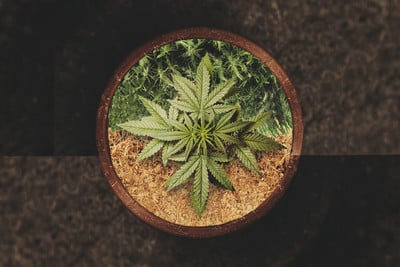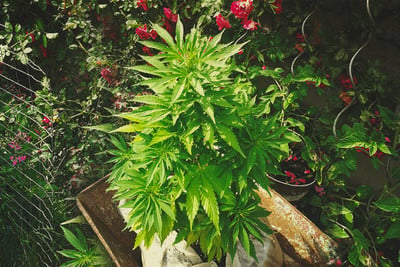.

Is Chelation The Key To Feeding Cannabis Plants?
Every cannabis plant that grows to its full potential is benefiting from chelation. Coco, hydro, and soil growers all need to know about this term. Chelation is the underreported marijuana intel that could potentially save your crop from micronutrient deficiencies.
Contents:
WHAT IS CHELATION?
Chelation[1], in ordinary decent stoner terms, is how clever scientists have chemically wrapped trace minerals in an envelope that the cannabis plant can open. The word itself is derived from the Greek word “chele” for claw. But it’s pronounced “key-late”. So another way to look at chelation is to imagine a micronutrient key clenched by a claw.
Many of the trace elements cannabis plants need are metals, and in their basic forms, they are unavailable. Marijuana doesn’t do heavy metal. The positive charge of micronutrients[2] like iron or zinc must be enveloped by a chelate to pass the plant pore barrier. This is accomplished as the added chelate surrounds the element with a negative or neutral charge. Some cannot completely encapsulate the element, but cover it enough to get into the plant, and are technically referred to as complexes.
Cannabis cultivators need not delve into an online chelation “rabbit hole”. All you need to understand is that chelation is essential for cannabis plants to process and utilise micronutrients. Without chelates, cannabis plants will develop micronutrient deficiencies.
CHELATED FERTILISERS
The fertilisers you choose to feed your cannabis plants should, ideally, be substrate-specific. More important is that the pH of every watering is optimal for your particular medium. It’s possible to adjust the dosage and get away with using a mix and match of nutrient lines. However, an unstable pH that swings either too high or too low invariably leads to micronutrient deficiencies.

FEEDING THE MEDIUM, FULVIC AND HUMIC ACID
Fulvic acid and humic acid[3] are valuable natural organic chelates found in coastal shale deposits. Prehistoric plant matter breaking down over millions of years eventually forms humus rich in humic acid[4], which microbes in the soil convert into fulvic acid. Organic growers will benefit by adding both humic and fulvic acid to nutrient solutions.
Humic acid is a substrate conditioner. It’s not actually available to the cannabis plant. Its true function is to help create a living soil. Moreover, humic acid is the precursor to fulvic acid. Coco growers often run into problems during flowering with cal-mag and/or iron deficiencies, and should definitely supplement with organic chelates. Most well-known cannabis nutrient[5] brands have substrate-enhancer products that contain humic and fulvic acid.
FEEDING THE ROOTS
High-quality base nutrients typically contain synthetic chelates. Look on the side of your bottles of liquid fertilisers for ingredients with the following letters beside them EDTA, DTPA, and EDDHA. Think of them as micronutrient delivery systems for the root zone.
By definition, trace elements are only required by cannabis plants in tiny amounts. The macronutrient contents are clearly labelled on the front in bold-type NPK values. In contrast, you will find the micronutrient information in the fine print.
Sure, NPK ratios are important, but the best lines of base nutrients will have the correct macronutrient levels and all the necessary trace minerals in the same bottle. Supplementing[6] with enzymes and amino acids will also facilitate chelation. Consider these supplements catalysts to the chelation process and nutrient uptake boosters.
Hydro growers will be the first to see the negative consequences when the roots cannot absorb minerals. Cannabis plants grown in soil can be sustained longer by the medium, but even super-soil crops can experience nutrient lockout without chelation. Dialling in the perfect pH every watering[7] is so important. Chelation and consistency are closely related.

FOLIAR FEEDING
The natural waxy coat on cannabis leaves repels water and charged particles in the liquid. Chelated fertilisers applied as a foliar feed can overcome this barrier and penetrate the pores. During the vegetative growth phase is the best time to experiment with foliar feeding. As flowers begin to form, it becomes a risky practice. However, to correct a deficiency ASAP, you can’t find a more effective method to deliver micronutrients efficiently than foliar feeding.
MICRONUTRIENT DEFICIENCIES
Chelation is the secret to optimal plant performance. Many growers focus exclusively on the macronutrients and mistakenly put all their faith in online nutrient calculators and feeding schedules. Pumping plants full of maximum-strength macronutrient fertilisers as frequently as possible is not the objective of cannabis cultivation. More often than not, it triggers a micronutrient deficiency.
A more balanced, plant-specific approach is advantageous. Some cannabis strains are more vulnerable to micronutrient deficiencies than others. When growing cannabis from seed, you can expect some variation between individual plants. Different phenotypes from the same strain may have very different feeding habits. A blend of foliar feeding[8] and root feeding with chelated nutrients can help you keep all your cannabis plants happy and healthy.
- Chelates In Nutrition | Howard F Kratzer | Taylor & Francis eBooks, Re https://www.taylorfrancis.com
- Synthetic Iron Chelates to Correct Iron Deficiency in Plants https://www.researchgate.net
- Humic and fulvic acids as biostimulants in horticulture https://www.sciencedirect.com
- Effect of Humic Substances on Plant Growth https://www.scirp.org
- The supramolecular structure of humic substances https://www.researchgate.net
- Handbook of Plant Nutrition https://home.czu.cz
- Principles of plant nutrition https://www.researchgate.net
- Foliar Fertilization: Scientific Principles and Field Pratices https://www.researchgate.net


























